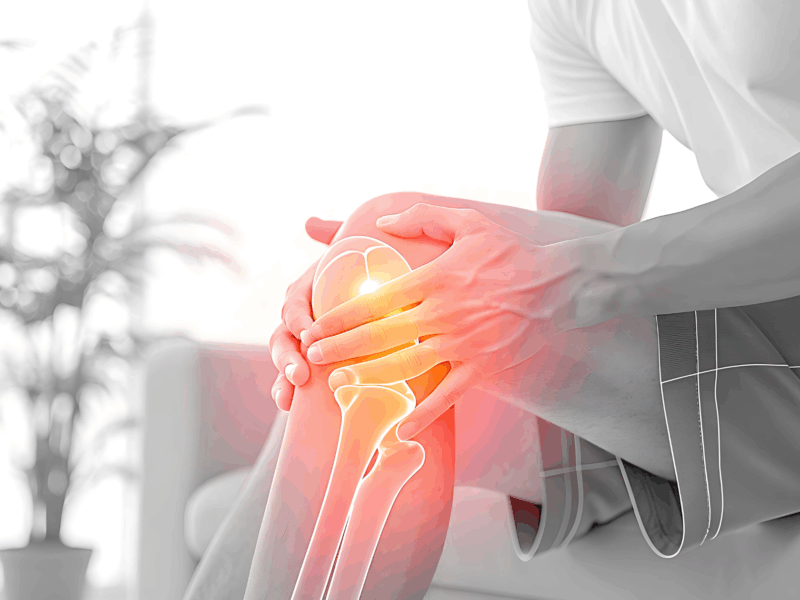Tendon injuries are a common cause of pain and limited mobility, often affecting athletes, active individuals, and even those who perform repetitive daily tasks. Whether it’s tennis elbow, Achilles tendinitis, or rotator cuff tears, tendon injuries can be slow to heal due to limited blood flow in tendon tissue. Fortunately, regenerative medicine is changing how these injuries are treated—offering innovative, natural options that help the body repair itself.
Understanding Tendon Injuries
Tendons are strong, fibrous tissues that connect muscles to bones. They play a crucial role in movement and stability, but they can be prone to overuse or acute injury. Common tendon injuries include:
- Tendinitis – Inflammation of the tendon, often caused by repetitive stress or overuse.
- Tendinosis – Chronic tendon degeneration without significant inflammation.
- Partial or Complete Tears – More severe injuries where the tendon fibers are disrupted.
Traditional treatments such as rest, physical therapy, and anti-inflammatory medications may provide relief, but recovery can take months. In some cases, surgery is required—but regenerative medicine offers an alternative that supports natural healing from within.
What Is Regenerative Medicine?
Regenerative medicine focuses on repairing or replacing damaged cells, tissues, or organs to restore normal function. In the context of tendon injuries, regenerative treatments use the body’s own biological materials to stimulate healing, reduce inflammation, and promote tissue repair.
Two of the most commonly used regenerative treatments for tendon injuries include:
- Platelet-Rich Plasma (PRP) Therapy – PRP involves drawing a small amount of the patient’s blood, processing it to concentrate the platelets, and injecting it into the injured tendon. Platelets release growth factors that trigger the body’s healing response, improving tissue repair and reducing pain.
- Stem Cell Therapy – Stem cells are special cells that can develop into various types of tissue. When injected into a damaged tendon, they can help regenerate new, healthy tissue and accelerate healing. These cells are often harvested from bone marrow or adipose (fat) tissue.
Benefits of Regenerative Medicine for Tendon Injuries
- Enhanced Healing – By stimulating natural repair processes, regenerative medicine can promote faster and more complete healing.
- Reduced Inflammation and Pain – Treatments like PRP help calm chronic inflammation that contributes to long-term tendon pain.
- Lower Risk than Surgery – These minimally invasive procedures carry fewer risks and shorter recovery times compared to surgical repair.
- Long-Lasting Results – Instead of masking pain, regenerative treatments target the root cause by repairing damaged tissue.
Conditions Commonly Treated with Regenerative Medicine
- Tennis elbow (lateral epicondylitis)
- Golfer’s elbow (medial epicondylitis)
- Rotator cuff injuries
- Achilles tendinitis
- Patellar tendinitis (“jumper’s knee”)
- Plantar fasciitis
What to Expect from Treatment
Regenerative treatments are typically performed in an outpatient setting. After a thorough evaluation, your provider will determine whether PRP, stem cell therapy, or a combination of both is best for your specific injury.
Most patients experience minimal downtime and can return to light activity within days. Full recovery may take several weeks to months as the body rebuilds healthy tendon tissue. Physical therapy is often recommended alongside regenerative treatments to restore strength and flexibility.
The Future of Tendon Healing
Regenerative medicine represents a major advancement in orthopedic and sports medicine. Rather than relying solely on medications or surgery, these treatments harness the body’s natural ability to repair and regenerate. As research continues, regenerative therapies are expected to become even more effective, offering new hope for those suffering from chronic tendon pain.
Conclusion
If you’re struggling with a tendon injury that isn’t healing through traditional methods, regenerative medicine may provide the breakthrough you need. By promoting natural tissue repair and reducing pain, treatments like PRP and stem cell therapy can help you get back to the activities you love—faster and stronger than before.
[gravityform id=1 title=false description=false]



 Traveling with Chronic Pain: Tips for Flights & Road Trips
Traveling with Chronic Pain: Tips for Flights & Road Trips
